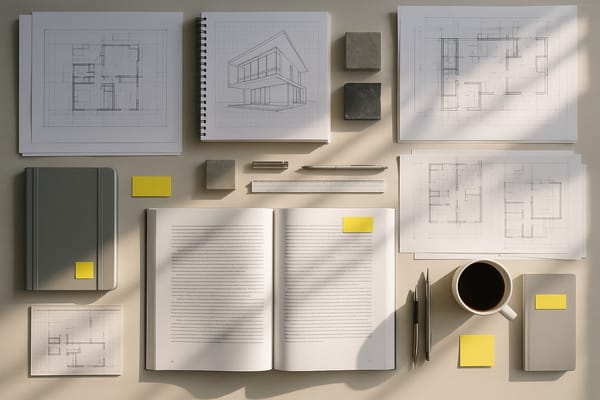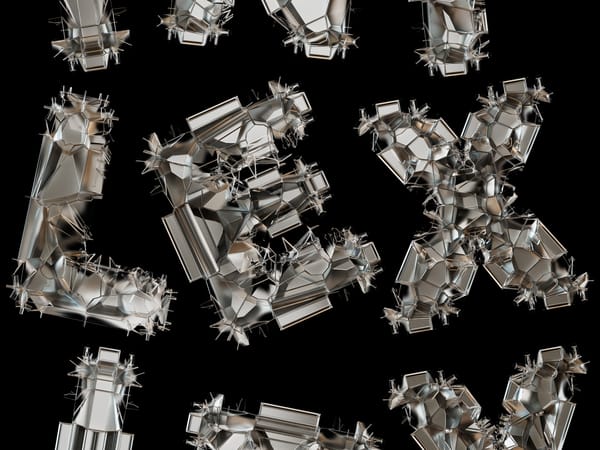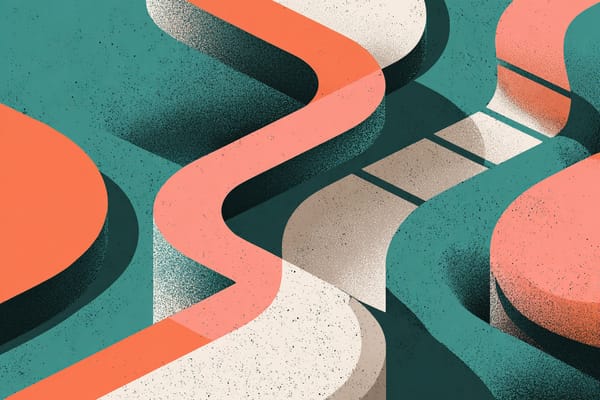Creativity Is Easy. Time Allocation Is Hard
"The real struggle isn’t creativity—it’s learning how to spend your time so your best ideas actually become real."

Most creatives think their biggest challenge is coming up with ideas.
It isn’t.
Ideas arrive in the shower, while you’re driving, or halfway through brushing your teeth. Inspiration isn’t scarce—attention is.
The real struggle isn’t creativity. It’s allocation.
Not what to make, but when to make it.
Not how to stay inspired, but how to spend your time once you are.
Because if you look closely, you’ll see that most creative frustration doesn’t come from a lack of talent—it comes from a lack of timing.
The Comfortable Myth
It’s easy to believe creativity is the hard part. It flatters us.
We can tell ourselves, “If I just had more ideas, more tools, more time, I’d finally produce my best work.”
But creativity is naturally abundant.
The bottleneck isn’t idea generation. It’s allocation—choosing which ideas deserve your limited time and having the discipline to actually finish them.
Creative Energy Without Structure Is Just Static
Freelancers and designers often run on bursts of energy. A new project lands and you’re on fire for three days—caffeinated, inspired, unstoppable.
Then the admin sneaks in, and suddenly the spark fades.
This cycle isn’t about motivation. It’s about misallocated time.
Energy without direction becomes noise. It’s like connecting a lightbulb directly to a power plant—too much current, no control.
You don’t need more energy; you need better wiring.
Allocation is the wiring.
The Hidden Skill Every Creative Needs
Ask any designer what skills they value: composition, storytelling, type, rendering, colour theory, and concept development.
Few mention time allocation—yet it’s the one that quietly determines all the others.
Because time allocation is the meta-skill—the one that shapes every other decision.
It decides:
- Which ideas ever get finished.
- How often your portfolio evolves.
- Whether your best work is shared or just stored in drafts.
It’s invisible, unglamorous, and often ignored. But without it, even the most talented creative becomes scattered—a collection of potential, not momentum.
Why We Struggle to Allocate
There’s a reason creatives find time allocation harder than creativity:
Allocation is all constraint, while creativity is all expansion.
Creativity says, “Imagine everything.”
Allocation says, “Pick one and finish it.”
We love the freedom of options but resist the discipline of limits.
Yet the irony is that creative breakthroughs come from boundaries—time, format, medium, or deadline.
You can have a hundred ideas, but if you only have three hours, you must choose.
That’s allocation. That’s design in its truest sense: shaping limited resources into meaningful outcomes.
The Designer’s Dilemma
Designers, especially freelancers, wear a dozen hats.
You’re not only designing—you’re managing clients, handling social media, quoting jobs, sending invoices, and trying to find time for your own projects.
So you spend your days reacting instead of directing.
Urgent work always wins.
Important work quietly disappears.
It feels like survival, but it’s really fragmentation.
The hardest part isn’t deciding what to do. It’s deciding what to stop doing.
Allocation is subtraction. It’s the courage to leave ideas unfinished, to decline projects that don’t fit, and to say, “Not now,” even to good opportunities.
Because every yes is a withdrawal from your creative savings account—and you can’t overdraft energy forever.
The Illusion of Progress
The creative industry rewards visibility.
Every post, every reel, every share gives you the illusion of momentum.
You feel productive because you’re active.
But not every activity compounds.
Scrolling for inspiration feels like research.
Tweaking old projects feels like refinement.
Answering every email immediately feels like professionalism.
But if you step back, much of it is misallocated energy—effort that maintains appearance but not growth.
You’re not lazy. You’re just busy in the wrong places.
A Lesson from Design Systems
In design, we understand the power of structure.
A good grid or layout system doesn’t limit creativity—it focuses it. It creates order so expression can flow freely inside it.
Time allocation is the same. It’s a grid for your day.
Without it, your creative energy spills everywhere.
With it, you can focus deeply on one project, then move cleanly to the next.
It’s not about rigid scheduling; it’s about intentional rhythm.
Creativity thrives on structure—just enough to contain the chaos, not kill it.
Three Allocation Mistakes Creatives Make
They Treat Every Hour the Same
Not all hours have equal value. Protect your best ones, like client time—use peak hours for deep work and slower ones for admin. Two focused hours beat six scattered ones.
They Forget Maintenance Time
Like tools, creative systems dull over time.
Allocating time for review—to sharpen workflows, clean files, or reflect on process—keeps the machine smooth.
Neglect leads to creative drag.
The Myth of “Balance”
Creative life isn’t about perfect balance—it’s about deliberate imbalance.
Some weeks are 80% exploration, others 80% execution—and that’s fine.
What matters is that you decide the imbalance, instead of letting it happen by accident.
That’s allocation—conscious weighting.
Your Calendar Is a Design Problem
Think of your week like a layout.
Every block of time is an element—it has hierarchy, function, and purpose.
Ask yourself:
- What’s the focal point? (Where your best hours should go.)
- What’s supporting content? (Tasks that matter but don’t lead.)
- What’s visual noise? (Everything that steals clarity.)
Good layouts breathe. So should your schedule.
White space isn’t wasted time—it’s recovery. It’s the margin where ideas form.
How to Reallocate Creatively
Define the Real Work
What truly moves your creative life forward?
Learning, outreach, portfolio building, personal exploration—identify the 20% that generates 80% of results.
Create Fixed Points
Set immovable anchors: your best creative hours, your non-negotiable rest, and your key deliverables.
Let everything else flow around those points. That’s how you create a flexible, sustainable rhythm.
Audit the Drift
At the end of the week, ask: Where did my time actually go?
Most misallocation isn’t deliberate—it’s drift. Awareness is the first correction.
Treat Time Like a Material
Designers think in materials—type, texture, light, and form.
Add time to that list. It’s the most expensive medium you’ll ever work with. Spend it as carefully as you choose colour or composition.
Creativity Loves Constraints
Ironically, the more you allocate, the freer you feel.
When you know your working windows, your rest periods, and your limits, your brain relaxes.
You stop carrying twelve open tabs in your head.
You stop confusing motion for momentum.
Allocation gives permission to finish, and finishing creates feedback—the oxygen of creative growth.
Takeaway: Time allocation isn’t about squeezing more hours from your week—it’s about assigning meaning to the ones you already have.
A Quick Experiment
- Pick one project you’ve been delaying.
- Allocate two focused hours to it each day.
- Protect that slot like a client meeting.
By Friday, you’ll realise something profound:
You didn’t need more creativity—you just needed a boundary.
Boundaries don’t restrict creative freedom; they enable it.
The Real Work Behind the Work
Every creative output—every poster, brand identity, or illustration—is the result of invisible time decisions.
Allocation is the scaffolding holding up the art.
When it’s strong, you create with flow. When it’s weak, everything wobbles.
That’s why “time management” isn’t a business skill—it’s a creative one.
Because for creatives, time is the truest medium.
Closing Thought
Creativity was never the hard part—giving it time to grow was.
Every creative has enough hours—just not always in the right places.
So this week, instead of chasing inspiration, design your calendar.
Instead of asking, “What should I make?” ask, “When will I make it?”
Because once you master allocation, you’ll find something surprising:
The ideas were never the problem.
They were just waiting for room to exist.



